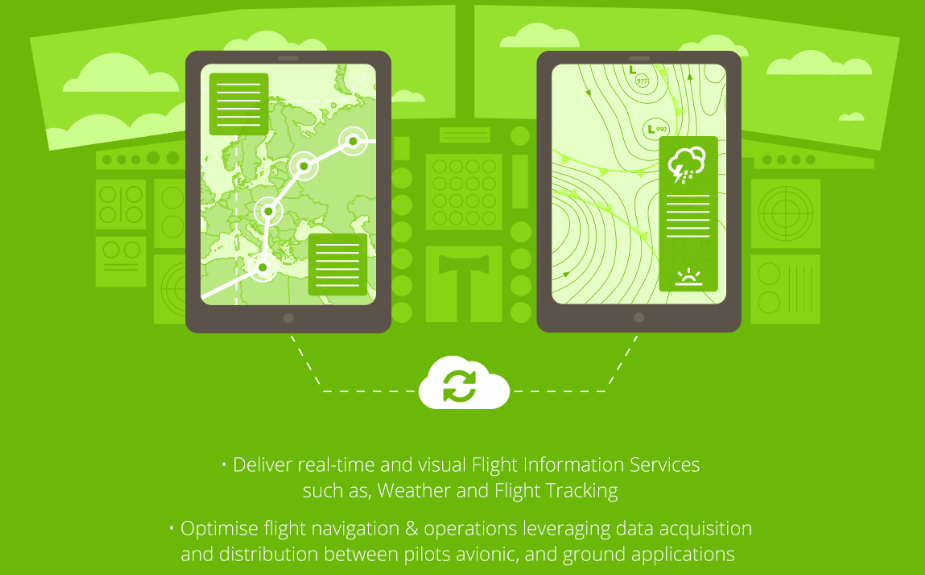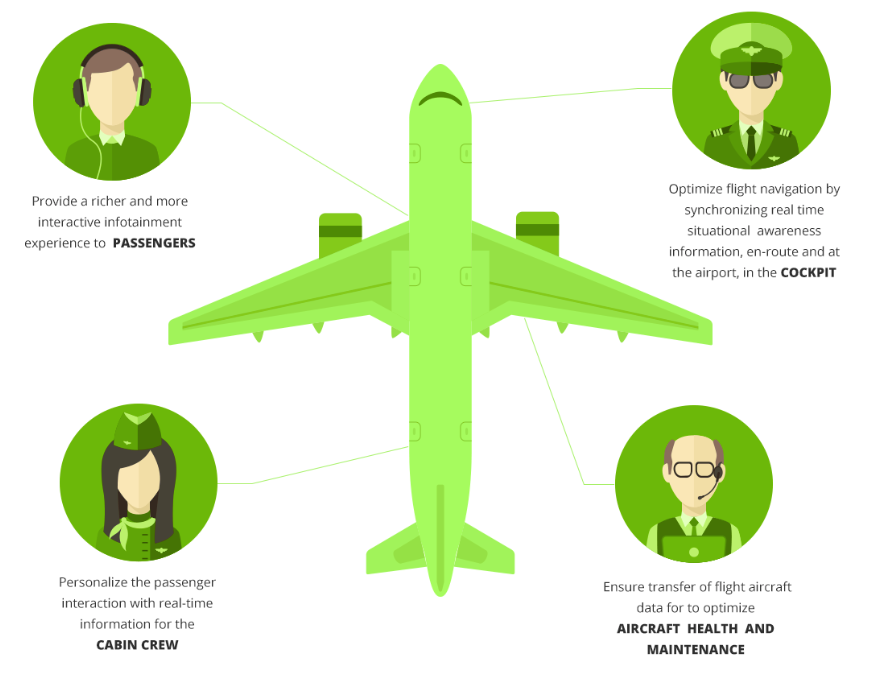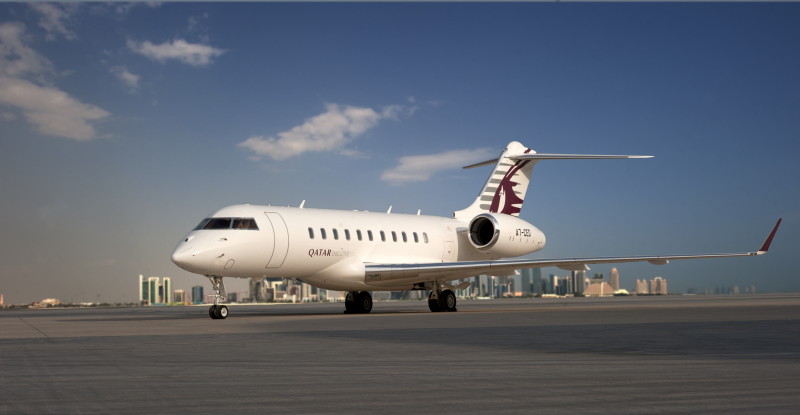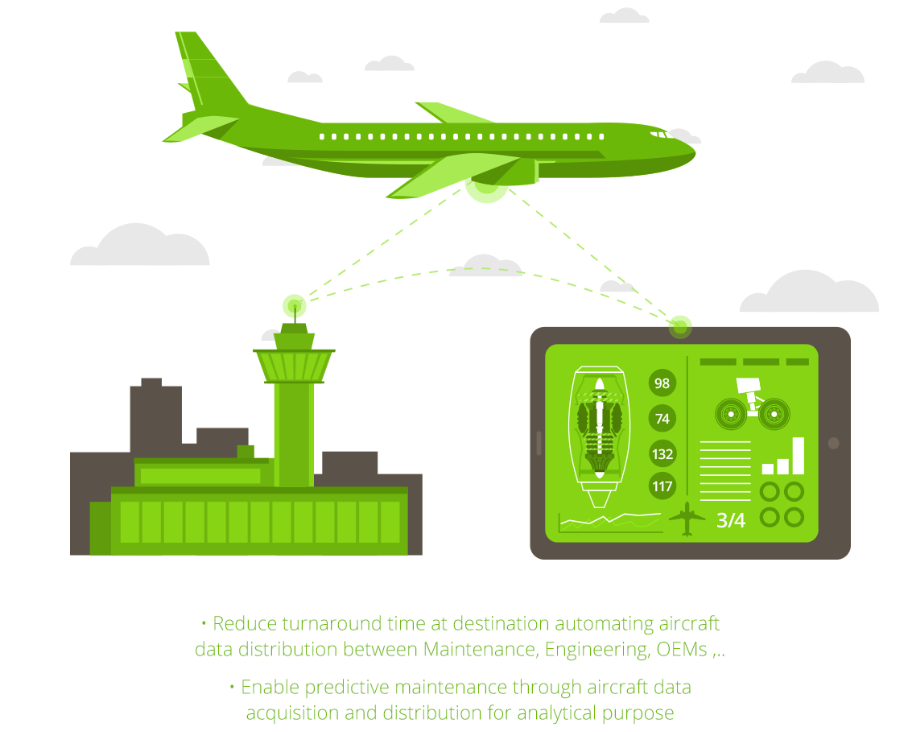The aviation industry is abuzz with chatter about the operational and safety benefits that can be gleaned from aircraft e-enablement. But while some airlines have taken crucial first steps towards viewing connected aircraft as a node on their networks – Delta Air Lines immediately springs to mind – the business aviation community, as is so often the case, is ahead of the commercial sector.
The Middle East business aviation market, for instance, has become the most sophisticated user of inflight connectivity, employing it for both cockpit and cabin applications, according to inflight mobile phone and Wi-Fi service provider OnAir.
“We are still in the early days of the e-Aircraft: it will take time for the full potential to be realized. However, business jet owners and operators are already beginning to use connectivity to increase flight efficiencies. In this market, the emphasis is very much on time savings as well as cost savings,” OnAir comms manager Aurelie Branchereau-Giles tells RGN.
“As you’d expect, business jet owners and operators are pioneering new technology, such as connected Electronic Flight Bags (EFBs). Constant updates throughout the flight, for example, provide live weather data, [and] can make the flight quicker.” This too has inherent safety benefits, as flights can be more precisely routed around bad weather.
 Meanwhile, the cabin crew on business jets in the Middle East “use the plane’s connectivity for passenger concierge services, making travel, hotel and restaurant arrangements at the destination”, she notes. “It may not come under the ‘operational’ heading for a commercial airline, but it certainly saves time for the passenger both before and after the flight, which is one of the main drivers for business jet passengers.
Meanwhile, the cabin crew on business jets in the Middle East “use the plane’s connectivity for passenger concierge services, making travel, hotel and restaurant arrangements at the destination”, she notes. “It may not come under the ‘operational’ heading for a commercial airline, but it certainly saves time for the passenger both before and after the flight, which is one of the main drivers for business jet passengers.
“The cabin crew also use connectivity to send and receive updates during the flight, such as inventory management and any cabin maintenance requirements. This helps ensure the aircraft is ready for the next flight as quickly as possible.”
In the cabin, business jet passengers value their privacy. With OnAir’s inflight GSM solution, known as Mobile OnAir, “passengers use their own phones as if they were on the ground: no one need know where they are, providing another layer of privacy”, says Branchereau-Giles.
 Telemedicine is another application that is increasingly being used by Middle Eastern business jet operators. Diagnostic information, including temperature, pulse rate, blood pressure and even blood sample analysis, can be transmitted to a doctor on the ground. The video functionality also means the doctor can make a visual examination. The pilot can then use the initial diagnosis to decide either to continue to the original destination or make a diversion if necessary.
Telemedicine is another application that is increasingly being used by Middle Eastern business jet operators. Diagnostic information, including temperature, pulse rate, blood pressure and even blood sample analysis, can be transmitted to a doctor on the ground. The video functionality also means the doctor can make a visual examination. The pilot can then use the initial diagnosis to decide either to continue to the original destination or make a diversion if necessary.
OnAir envisages the next step will be the adoption of automated aircraft health monitoring and maintenance reporting. “Various elements of the aircraft will send messages to the maintenance organisation about their status, both preempting required work, and enabling faster and more efficient maintenance,” says Branchereau-Giles.
A unit of air transport communication and IT leader SITA, OnAir has over 60 customers around the world, including government and VIP aircraft, as well as commercial airlines across the Middle East and the rest of the world. It provides them all with consistent, virtually global coverage by operating over Inmarsat’s L-band-based SwiftBroadband service.
A service distribution partner for the Inmarsat Global Xpress (GX) Ka-band service OnAir will be able to upgrade customers to this higher bandwidth offering when it becomes available next year, following the launch of two more Boeing-made Ka satellites to round out the three-satellite network.
Honeywell, which is providing the terminal units for the GX program, previously told RGN that connectivity is poised to become even more deeply embedded in the entire aircraft environment.
“I think that there are some new paradigms being floated of how connectivity and IFE in particular live together and I think that probably more people are looking at connectivity as being [less of a] servant or a component of IFE, but more a fundamental part of the aircraft itself as it provides the ability for all – cabin, crew and avionics – to be connected,” said John Broughton, director marketing and product management at the firm.
“These big pipes [like GX] will move that connectivity idea out from under IFE and make it a more central part of aircraft – even aircraft design from the onset. When you think of it, here we are in 2014, and by-in-large – even on modern aircraft – people have designed airplanes and only consider connecting it up and making use of some of the satcom links after it is done and dusted. But once it gets embedded into people’s brains what Global Xpress is bringing, the fact that the aircraft is talking at all times [will be] central design from the outset.”













